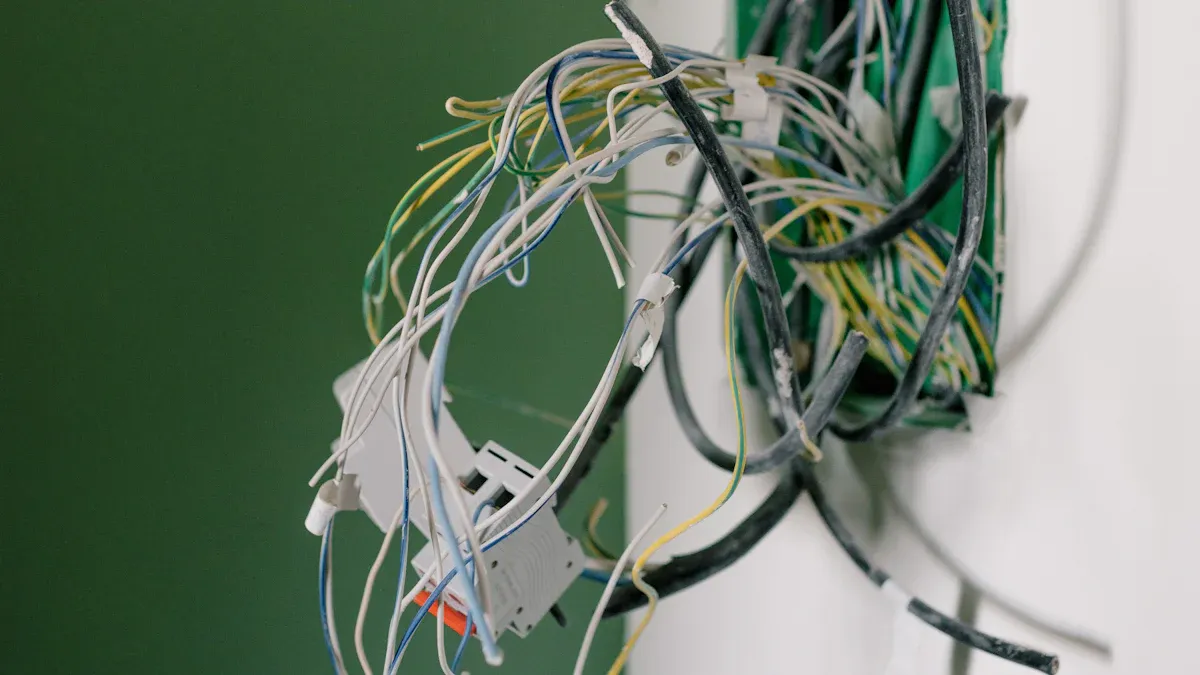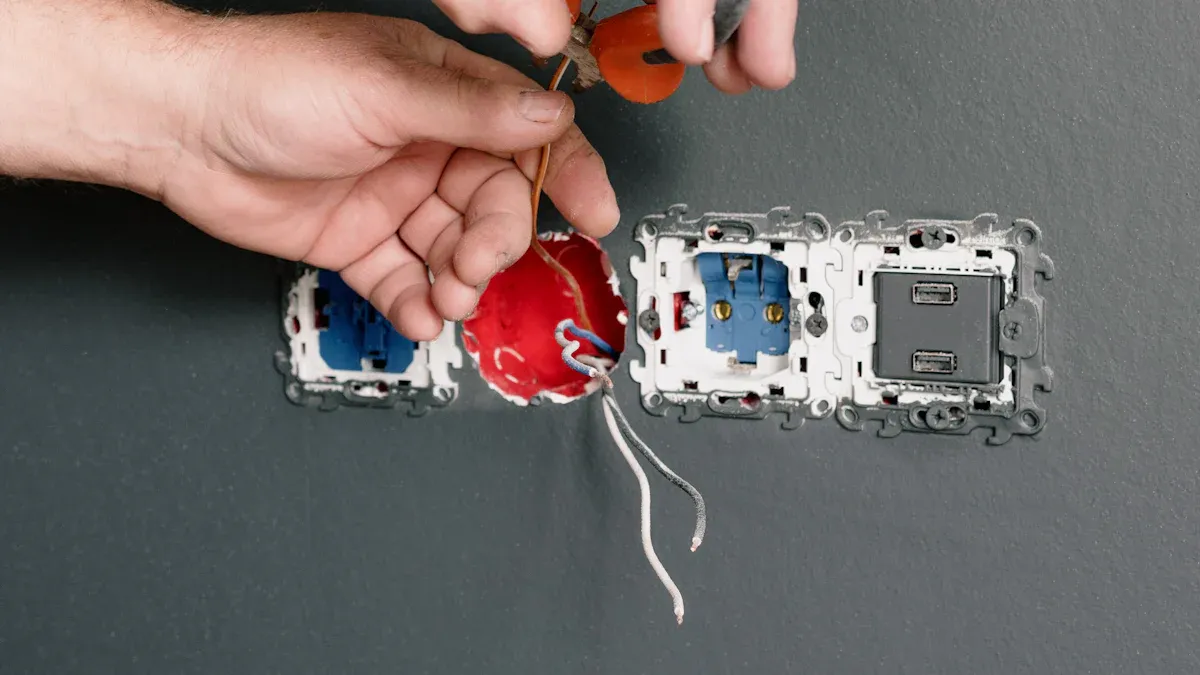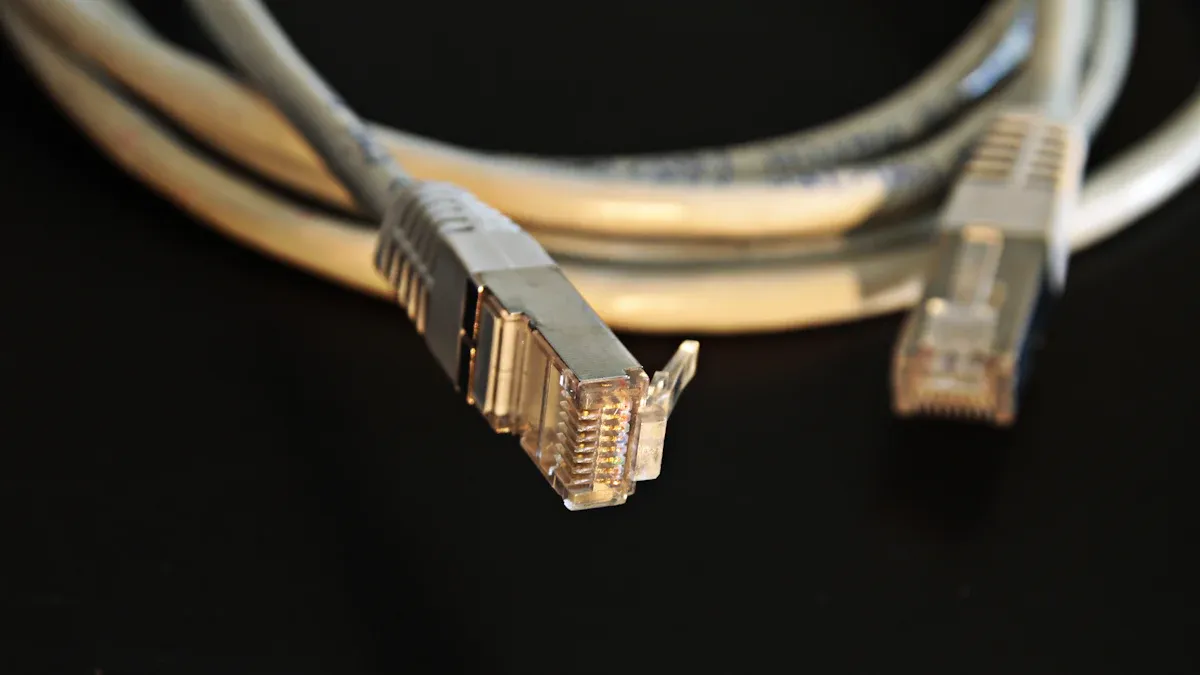
Have you ever wondered how to install a metal telephone jack in your home or office? It’s easier than you think! Whether you’re replacing an old firefighter telephone jack or adding a new stainless steel telephone jack, the process is straightforward. With the right tools and a little patience, you’ll have your telephone jack installed in no time.
Key Takeaways
- Collect all tools and materials before you begin. You will need a screwdriver, wire stripper, and a stainless steel telephone jack. Being ready helps save time and makes work easier.
- Pick a good spot for the telephone jack. Find a place that is easy to reach and not in busy areas. This makes it handy and keeps it safe from harm.
- Turn off the phone line before starting. Use a voltage tester to check if the line is safe. Staying safe is very important when working with electrical parts.
Tools and Materials Needed

Before you start installing your stainless steel telephone jack, it’s important to gather everything you’ll need. Having the right tools and materials on hand will save you time and make the process much smoother.
Essential Tools for Installation
Here’s a list of tools you’ll need to get the job done:
- Screwdriver: A flathead or Phillips screwdriver will help you secure the jack to the wall.
- Wire stripper: This tool is essential for removing the insulation from the telephone wires.
- Drill (optional): If you’re mounting the jack on a hard surface, a drill might be necessary.
- Voltage tester: Use this to ensure the phone line is disconnected before you start working.
- Needle-nose pliers: These are handy for bending and positioning wires.
Tip: If you don’t already own these tools, consider borrowing them or purchasing a basic toolkit. It’s a worthwhile investment for future DIY projects!
Materials Checklist for a Stainless Steel Telephone Jack
Now that you’ve got your tools, let’s talk about materials. Here’s what you’ll need:
- Stainless steel telephone jack: Make sure it’s compatible with your phone line and matches your decor.
- Telephone wire: If you’re replacing an old jack, you can reuse the existing wire. Otherwise, you’ll need new wiring.
- Mounting screws: These usually come with the jack, but double-check to avoid delays.
- Wall anchors (optional): If you’re installing the jack on drywall, anchors will provide extra support.
- Electrical tape: This will help secure the wires and prevent accidental disconnections.
Note: Double-check that your stainless steel telephone jack includes an instruction manual. It can be a helpful reference during installation.
With these tools and materials ready, you’re all set to move on to the next step: preparing for installation!
Preparation
Choosing the Installation Location
Picking the right spot for your stainless steel telephone jack is the first step. Look for a location that’s easy to access and close to your phone or other devices. Avoid areas with high foot traffic or places where the jack might get bumped or damaged. If you’re installing it in a home office, placing it near your desk is a smart choice. For wall-mounted phones, make sure the jack is at a comfortable height.
Tip: Check for existing wiring or outlets nearby. This can save you time and effort during installation.
Disconnecting the Phone Line Safely
Before you start working, you need to disconnect the phone line. This step is crucial for your safety. Locate the Network Interface Device (NID) box, usually found outside your home. Open it and unplug the test jack inside. This will cut off the phone line and prevent any electrical shocks while you work.
To double-check, use a voltage tester on the wires. If the tester shows no current, you’re good to go. Always prioritize safety when dealing with electrical components.
Understanding Telephone Wiring Basics
Understanding the basics of telephone wiring will make the installation process smoother. Most telephone wires come in pairs, with each pair consisting of a solid-colored wire and a striped wire. The most common colors are red and green, or blue and white. These wires connect to the terminals inside the jack.
Take a moment to identify the wires in your setup. If you’re replacing an old jack, note how the wires are connected before removing them. This will help you replicate the setup with your new stainless steel telephone jack.
Note: If you’re unsure about the wiring, refer to the instruction manual that comes with your jack. It often includes a wiring diagram for easy reference.
Step-by-Step Installation Guide

Mounting the Stainless Steel Telephone Jack
Start by positioning the stainless steel telephone jack where you want to install it. Hold it against the wall and mark the screw holes with a pencil. If you’re mounting it on drywall, use wall anchors to ensure it stays secure. For harder surfaces like wood, a drill might come in handy to create pilot holes.
Once the holes are ready, align the jack with the marks and use screws to attach it firmly to the wall. Make sure it’s level and doesn’t wobble. A stable mount will make the next steps much easier.
Tip: If you’re unsure about the placement, double-check the location before drilling. It’s better to adjust now than later!
Connecting the Telephone Wires
Now it’s time to connect the wires. Open the back of the stainless steel telephone jack to access the terminals. You’ll see screws labeled for each wire. Match the wires from your phone line to the corresponding terminals. Typically, red and green wires connect to the main terminals, but check your jack’s manual for specifics.
Use a screwdriver to loosen the screws slightly, then wrap the exposed wire ends around them. Tighten the screws to secure the connection. Make sure the wires are snug but not pinched.
Note: If the wires are frayed or too short, strip a small section of insulation to expose fresh wire. This ensures a clean connection.
Securing the Jack and Finalizing Installation
With the wires connected, close the back panel of the jack. Use screws to secure it in place. Double-check that everything is tight and aligned. If the jack feels loose, tighten the mounting screws a bit more.
Finally, plug in a phone to test the connection. If everything works, you’re done! If not, don’t worry—you’ll troubleshoot in the next section.
Reminder: Keep the area around the jack tidy. Use electrical tape to bundle any extra wire and prevent tangling.
Testing and Troubleshooting
How to Test the Connection
Once you’ve installed your stainless steel telephone jack, it’s time to test if everything works. Start by plugging a phone into the jack. Pick up the receiver and listen for a dial tone. If you hear it, congratulations! Your installation was successful.
If there’s no dial tone, don’t panic. Double-check that the phone line is reconnected at the Network Interface Device (NID). Sometimes, it’s easy to forget this step after installation. Also, make sure the phone you’re using is functional by testing it on another jack.
Pro Tip: If you have a multimeter, you can use it to check for continuity in the wiring. This can help confirm if the wires are properly connected.
Troubleshooting Common Installation Issues
If your phone still isn’t working, there are a few common issues you can troubleshoot.
- Loose Connections: Open the jack and inspect the wires. Make sure they’re securely attached to the terminals. A loose wire can disrupt the connection.
- Incorrect Wiring: Double-check the wire colors and their corresponding terminals. Refer to the jack’s manual to ensure everything matches.
- Damaged Wires: Look for frayed or broken wires. If you find any, strip the insulation to expose fresh wire and reconnect it.
- Faulty Jack: Sometimes, the jack itself might be defective. Try replacing it with another one to see if that resolves the issue.
Reminder: Always disconnect the phone line before opening the jack to avoid electrical shocks. Safety first!
By following these steps, you’ll be able to identify and fix most problems. If the issue persists, consider reaching out to a professional for assistance.
Installing a stainless steel telephone jack doesn’t have to be complicated. By following clear steps and using the right tools, you can handle it like a pro. Take your time, double-check your work, and keep the jack maintained. With a little effort, you’ll enjoy a reliable connection for years to come! 😊
FAQ
What should I do if I don’t have a voltage tester?
You can borrow one from a friend or buy an affordable model. Alternatively, disconnect the phone line at the NID to ensure safety.
Can I install the jack without a drill?
Yes! If the wall is soft enough, you can use a screwdriver to secure the screws. For harder surfaces, a drill makes the job easier.
How do I know if my jack is compatible with my phone line?
Check the product packaging or manual for compatibility details. Most jacks work with standard phone lines, but it’s always good to confirm before purchasing.
Tip: Keep your tools organized during installation. It saves time and reduces frustration! 😊


